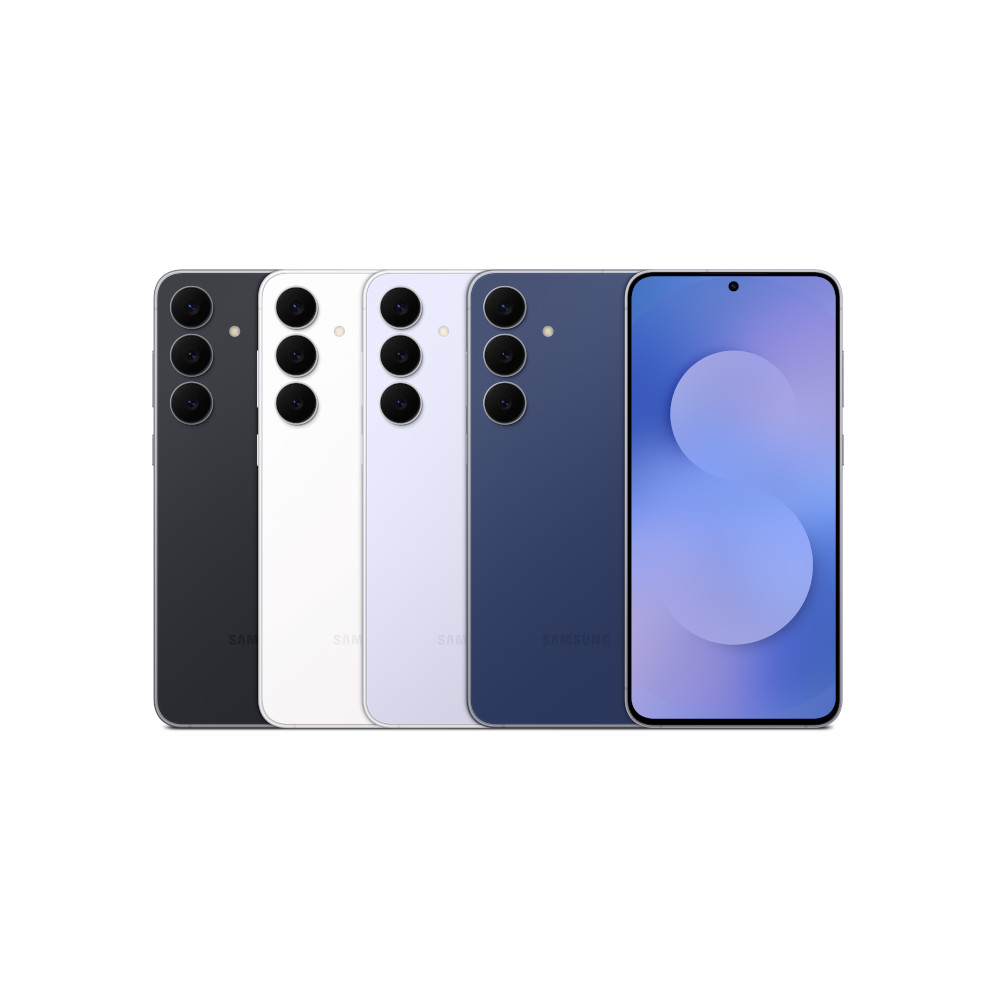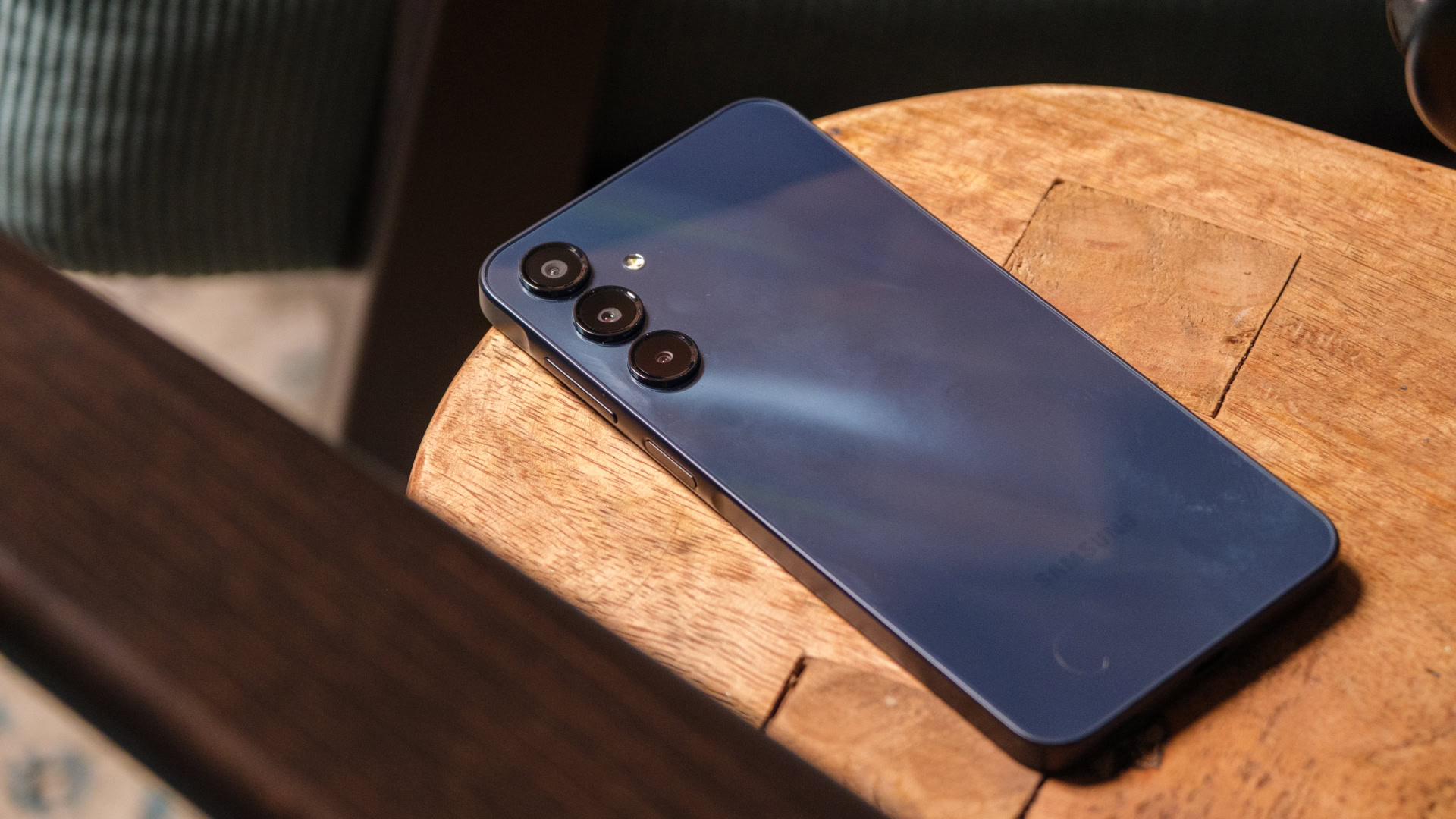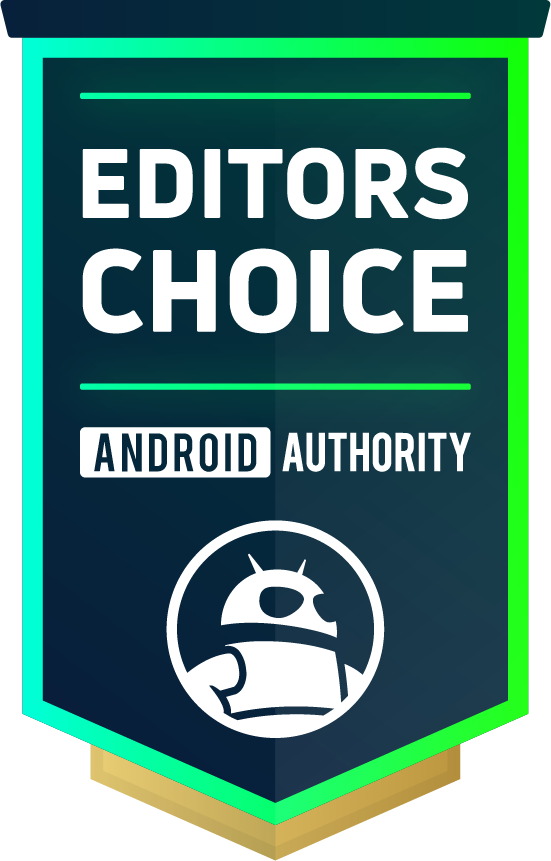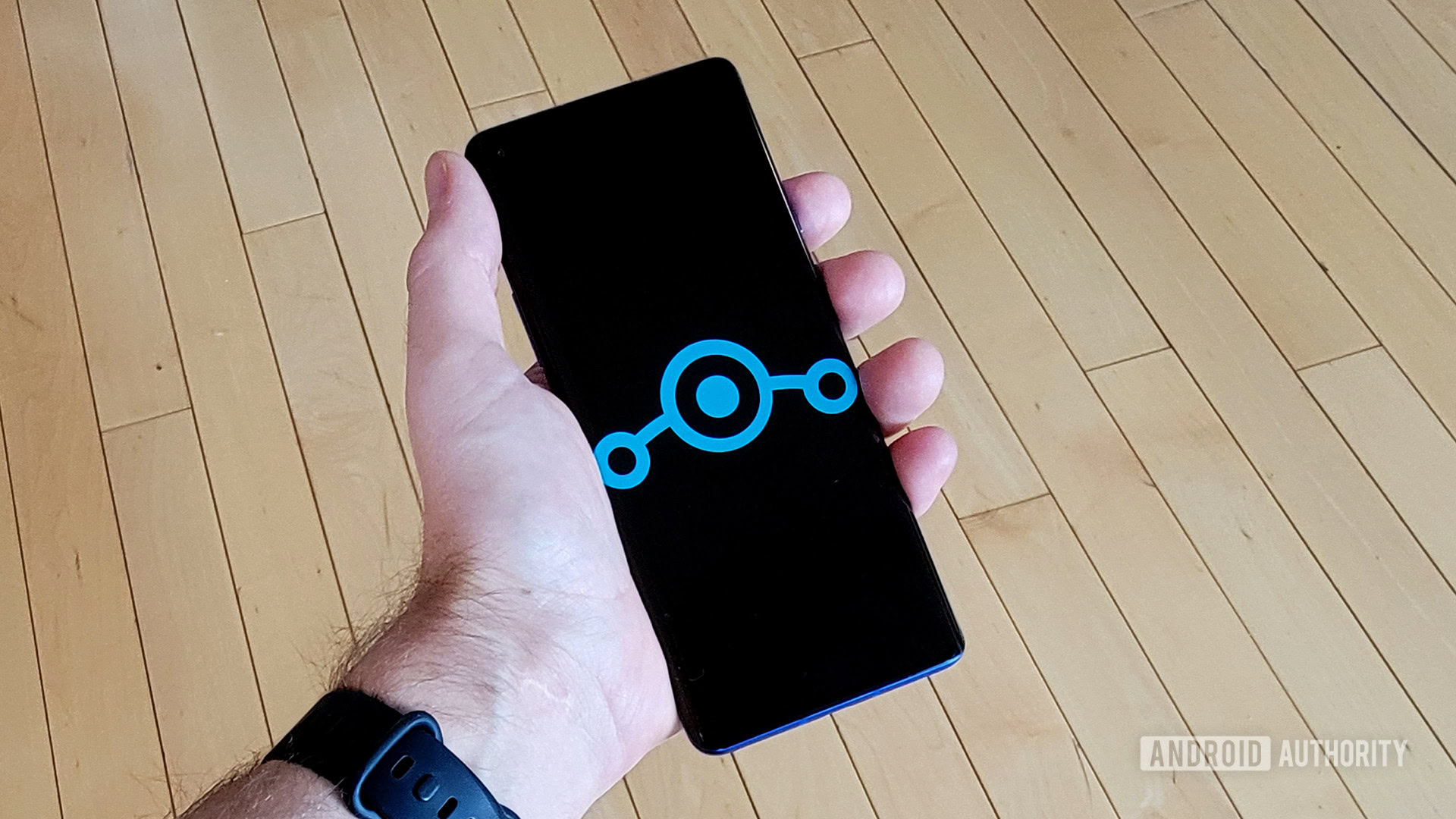At this point, I spend nearly half the year with my SIM in a Samsung phone. It’s hard to believe, given how frequently I bounce from one device to the next as a phone reviewer, but with a Galaxy release schedule that spans the entire year, it’s no surprise that Samsung keeps drawing me back in, no matter the price point. Sometimes that means firing up an ultra-thin Android flagship, and sometimes it means testing out a well-rounded budget phone, but no matter what, One UI always finds its way back into my pocket.
As such, I have a pretty good idea of what works for Samsung and what doesn’t — I know which Galaxy devices will offer a return on your investment and which ones won’t. So, with that in mind, here are the best Samsung phones that you should actually buy right now.
Samsung Galaxy S25 Ultra: The best Samsung phone overall

100x zoom • Big battery • 7 years software support
MSRP: $1,299.99
Samsung’s best for 2025
Simply put, this is Samsung’s very best phone for 2025. The Samsung Galaxy S25 Ultra is a 6.9-inch QHD+ device with 12GB of RAM, 256GB+ of storage, embedded S Pen, and the overclocked Snapdragon 8 Elite SoC. The key upgrade over the lower S25 models is a 200MP main camera and 100x Space Zoom.
Positives
- Premium materials
- Great battery life
- Solid cameras
- Top-tier Snapdragon performance
- Brilliant display
- Excellent software policy
Cons
- Downgraded S Pen
- Mostly AI-based upgrades
- Still no full Qi2 support
- Can be uncomfortable to hold
- Very expensive
These days, there’s only one real pick for the best phone in the Samsung ecosystem — it has to be the one with everything. Alright, well, the Galaxy S25 Ultra doesn’t fold, but it certainly does everything else. It pairs the largest battery and the fastest charging with the most flexible quad-camera setup and includes the productivity-minded S Pen for good measure. There is, of course, more to the story, but it’s tough to find any open space on Samsung’s top-end spec sheet.
That’s not really an exaggeration, either — I kicked off 2025 with the Galaxy S25 Ultra in my pocket, and it set the bar pretty high. It finally brought me around to the finer parts of its industrial design, swapping sharp corners for rounded edges and flattening the sides of the massive frame to bring it closer in line with the rest of the Galaxy S25 series. Yes, I still have some trouble wrangling the massive titanium and Gorilla Armor 2 body, but that’s more because of my small hands than anything else.
Besides, the amount of power that Samsung packed into that 6.9-inch frame makes the extra bulk worth it. The phone uses Qualcomm’s Snapdragon 8 Elite for Galaxy chipset to the very fullest, breezing through games, multitasking, and hours of streaming without much trouble. I was glad to have it on hand for the darkest months of last season’s Premier League campaign, as my often remote work meant keeping up with highlights on the largest screen I could fit in my pocket.
Of course, spending so much time out and about with the Galaxy S25 Ultra also allowed me to put its quartet of cameras through their paces, almost always with excellent results. The dual telephoto sensors, set to 3x and 5x, provide Samsung’s top-end flagship with excellent sharpness across shorter zoom ranges. Meanwhile, Galaxy AI takes over for some heavier processing once you extend the zoom beyond 30x, all the way to 100x.
Samsung’s Galaxy S25 Ultra offers a little of everything, which makes it ready for anything.
And, now that I’ve mentioned Galaxy AI, I should point out that it’s pretty much everywhere. It powers Samsung’s Drawing Assist and the Now Bar, and it complements Gemini nicely with Circle to Search and Gemini Live. You’ll also get plenty more Galaxy AI features in the future, thanks to seven years of both Android updates and security patches. One thing to note, though, is that Samsung has removed Bluetooth connectivity from its latest S Pen, so you’ll have to get used to a slightly simpler experience.
Samsung Galaxy S25 FE: The best value Samsung phone


Large 120Hz display • Big battery • 50MP camera
MSRP: $649.99
Exynos-powered, 6.7-inch Samsung experience
The Samsung Galaxy S25 FE is a more affordable experience for fans of the S25 series. Powered by an Exynos 2400 processor, this 6.7-inch phone offers better specs than ever in a FE phone, and nearly all of the greatness found in mainline S25 phones.
Positives
- Larger battery with good endurance
- Significantly faster wired charging
- Plenty of Galaxy AI and general features
- Seven years of OS and security updates
- Slimmer and lighter design
Cons
- No performance upgrades
- Rear cameras showing their age
- Only 8GB/128GB in base model
While Samsung’s Ultra may be its very best phone in 2025, its latest Fan Edition presents the most value for those who don’t want to break the bank. You may not exactly be able to tell the Galaxy S25 FE apart from those that went before it — it looks nearly identical to the aluminum and Gorilla Glass Victus sandwich of the Galaxy S23 FE and S24 FE — but this year’s launch packs a few changes that give it a little more punch.
Specifically, Samsung has finally decided that a 4,500mAh battery and 25W wired charging are no longer enough for its $650 sub-flagship. It’s finally bumped the capacity up to a 4,900mAh cell with the same snappy 45W charging that you’ll find on the Galaxy S25 Plus and Ultra, which is always a nice touch. So far in our time with the phone, we’ve found that it both charges faster and lasts longer, and it’s pretty efficient with how it draws power from the in-house Exynos 2400 chipset.
That chipset, which is a slight upgrade over the previous Exynos 2400e version, also powers a slimmed-down slate of Galaxy AI features. You’ll still get just about everything that you would with the flagship Galaxy S25 series, including Audio Eraser, the Now Bar, Now Brief, and more. And, for anything else you’re trying to add to your Fan Edition pickup, there’s always the option to add Good Lock.
The latest Galaxy S25 FE is powerful enough for more than just dedicated fans.
If there’s one hiccup on the Galaxy S25 FE right now, it’s that Samsung’s cameras are in an interesting place. We generally like the color profile — it’s punchy without overcooking the reds and greens — but the processed images often appear slightly soft, lacking a lot of contrast. They’re good enough to post on social media, but it usually takes some editing to bring a little depth back into your shots. But hey, that’s what Galaxy AI is for, isn’t it?

Hadlee Simons / Android Authority
Samsung Galaxy A56 5G: The best Samsung phone under $500

MSRP: $499.99
The Galaxy A56 5G gives you a lot of hardware for under $500, including a 5,000mAh battery, 45W charging, and a durable Gorilla Glass Victus Plus build.
Positives
- Durable Gorilla Glass Victus Plus
- Snappy 45W wired charging
- Excellent update commitment
Cons
- Dedicated macro camera
- No wireless charging
- Missing some AI features
Taking another step down the ladder, Samsung’s Galaxy A56 5G is a $500 mid-ranger that feels like it could almost brush up against the flagship realm. It offers a few select specs that put it ahead of the base Galaxy S25, featuring a larger 6.7-inch AMOLED panel and a massive 5,000mAh battery, which, in our experience, lasts for a long time. It also marks the return of the Galaxy A5X series to the US after a few years with the A3X operating as the top option.
That said, as a Galaxy A model, the Galaxy A56 5G makes a few concessions to keep its price down, starting with its Exynos 1580 chipset. It’s still perfectly capable for everyday usage, and it pairs nicely with the 120Hz display, but it’s not quite punchy enough to keep up with heavier gaming titles or demanding multitasking sessions.
There’s a little more style to the Galaxy A56 5G than we were expecting from a mid-range offering.
Also, as always, the Galaxy A56 5G comes equipped with a trio of rear cameras, much like its more premium counterparts. That said, it swaps the usually reliable 10MP telephoto sensor for a more specialized 5MP dedicated macro camera, which is okay but could easily be covered by a software-based macro mode from the 12MP ultrawide sensor. At the very least, you’ll get reliable, postable snaps from the main 50MP camera, which is a Samsung staple by now.
Samsung Galaxy A26 5G: The best Samsung phone under $300

Big AMOLED display • IP67 rating • Six years of updates
MSRP: $299.99
Samsung’s most value-for-money A series phone in 2025
With upgraded Gorilla Glass Victus Plus protection, a large AMOLED display, and six years of updates, the Galaxy A26 5G is everything you’d want from a budget Samsung phone.
Positives
- Gorilla Glass Victus Plus protection front and back
- Big, vivid AMOLED display
- Solid performance
- Rich, up-to-date One UI
- Six years of updates
Cons
- Mono speaker
- Average cameras
- Mushy haptics
If your budget is just a little bit tighter, you might find yourself eyeing the middle segment of the Galaxy A lineup. Naturally, the tendency here would be to look at the slightly more expensive Galaxy A36 5G, but we actually prefer the more approachable Galaxy A26 5G. Yes, the two budget-friendly phones look the same, with the same Gorilla Glass Victus Plus and aluminum builds and IP67 durability, but you’ll save yourself $100 by going with this pick.
Now, there’s more to why we love the Galaxy A26 than simply the savings, but that’s always a good place to start. Additionally, this $300 option features an in-house Exynos 1380 chipset, six years of software support, and a robust 5,000mAh battery. It all combines to create a no-frills, no-fuss budget phone that simply works — as long as you don’t mind trading an Infinity-O cutout for an Infinity-U notch to house the selfie camera.
Surprise! You don’t have to spend more for a great budget experience.
Interestingly, the Galaxy A26 5G features a single down-firing speaker and a fixed 120Hz or 60Hz refresh rate, both of which represent departures from the more expensive Galaxy A options. We’d still say that they’re worthwhile trades, though, given our general love for Galaxy Buds and the fact that Samsung makes up for its shortcomings with Circle to Search, Object Eraser, and Gemini across the entire lineup.

Rushil Agrawal / Android Authority
Samsung Galaxy A16 5G: The best Samsung phone under $200


MSRP: $199.99
Budget phone, flagship support.
The Galaxy A16 5G continues Samsung’s trend of reliable budget phones, only this time it’s equipped with flagship-grade software support that will see it enjoy up to six years of updates.
Positives
- Stellar software update promise
- Solid primary camera
- Decent battery life
- Great price
- Good charging
Cons
- Just-okay build quality
- Aging performance
- Weak peripheral cameras
- Bland design
At the bottom end of Samsung’s Galaxy A series, you’ll find the lowly but lovable Galaxy A16 5G. It was actually the first member of the AX6 series to hit the market, making it the only one that looks a little different from its siblings. Looks aside, the Galaxy A16 5G’s value comes from, well, its value. At less than $200, this is an easy pick if you’re looking for a first phone for your kids or even a reliable option for an older loved one.
In fact, I went so far as to dub the Galaxy A16 the best budget phone at the end of my review. Did I call it particularly exciting? No, it’s a pretty simple, straightforward option that goes even lighter on the Galaxy AI options, but that’s kind of what makes it great. You won’t have to worry about your kids getting too in the weeds with AI, and you shouldn’t have to answer questions from loved ones who really just want pictures of their grandkids, either.
The Galaxy A16 5G is as good a starter phone as you’re going to find.
One thing that should also help the Galaxy A16 5G win over the less tech-savvy fans out there is its return to Key Island. Samsung doesn’t always opt for in-display fingerprint readers on its lower-end launches, so the raised section of the frame makes it very easy to locate the side-mounted sensor without needing to look twice.
And, as always, the Galaxy A16 5G comes with a long-term update commitment that will keep it relevant long into the end of the decade. It matches the Galaxy A26 5G with six years of updates, although it launched with Android 14 onboard, which means it’ll wrap up with Android 20 rather than Android 21. But, when you’re spending just $200 on a phone, that’s value that we’ll take all day long.

Ryan Haines / Android Authority
Samsung Galaxy Z Flip 7: The best foldable Samsung phone

MSRP: $1,099.00
Samsung’s best flip phone for 2025.
The Galaxy Z Flip 7 offers some of Samsung’s most impressive flip phone hardware ever, featuring a 4.1-inch edge-to-edge cover screen and a thickness of just 13.7mm when closed. It also has a larger 6.9-inch inner display, good general performance, and seven years of Android updates.
Positives
- Excellent cover screen hardware
- Impressively thin design
- Larger, more comfortable inner display
- Good day-to-day performance
- Seven years of Android updates
Cons
- Frustrating cover screen software
- Exynos 2500 is a downgrade from the Snapdragon 8 Elite
- Slow (and hot) charging
- Middling cameras
No list of the best Samsung phones would be complete without a foldable entry, but it might surprise you to see us pick the Flip over the Fold. In fact, we actually rated the Galaxy Z Fold 7 a little higher in our review. So why isn’t it here? Quite simply, Samsung’s more affordable foldable phone makes more sense for most people. It’s not as cheap as the Galaxy Z Flip 7 FE — which is largely just a repackaged Galaxy Z Flip 6 — but the Galaxy Z Flip 7 is the way to go if you want to dip a toe into foldable phones without spending well over $1,000.
This year, Samsung’s most noticeable change comes in the form of a completely revamped cover screen, which has morphed from an unusual, 3.4-inch, folder-shaped panel to an expansive 4.1-inch square that occupies the entire top of the phone. It still works almost the same way as the cover screen on the Galaxy Z Flip 6, meaning that you’ll need Good Lock to add most apps, and you’ll have to make most of your changes from the internal display, but the extra real estate goes a long way.
Outside of the new display, Samsung has also slimmed down the Galaxy Z Flip 7, making it more comfortable to slip into a pocket as needed. The crease running across the internal 6.9-inch display is also less visible than ever before, and the new 21:9 aspect ratio makes the phone feel, well, like a normal slab smartphone — though the 4,300mAh battery and Exynos 2500 chipset lag slightly behind other similarly priced options.
The new cover screen gives Samsung’s Galaxy Z Flip 7 a larger lease on life.
Of course, the Galaxy Z Flip series has always been about making the most of its tricky form factor, and the seventh iteration does just that. It’s easier to use the dual cameras on the cover screen; there’s no shortage of AI features to help you interact with the internal display even less (including Gemini and the Now Brief on the cover screen), and its seven years of updates help the Galaxy Z Flip 7 maintain an edge over rivals like Motorola’s Razr Ultra.
Honorable mentions

Samsung Galaxy S25
12GB RAM • Vastly improved software • 7 years of support
Refined software, AI smarts, and next-gen hardware
With an emphasis on AI features, and a move to Gemini, the Samsung Galaxy S25 is an exciting update to the Galaxy S line. Equipped with a 6.2-inch FHD+ display, Snapdragon 8 Elite SoC, 12GB of RAM, a powerful 50MP camera, and updated hardware materials, we expect big things from the base model of Samsung’s 2025 flagship phone.
It’s surprising to see Samsung’s smallest flagship resigned to an honorable mention, but hear me out: It’s just not that exciting this year. Yes, the Galaxy S25 has its strengths, like flexible cameras and a solid chipset, but it’s not always easy to see where the 6.2-inch flagship justifies its asking price. That said, if you’re looking for a compact Galaxy phone, this is your best option.

Samsung Galaxy S25 Plus
Snapdragon 8 Elite power • 12GB RAM • 7 years software support
A powerful 6.7-inch phone, with 7 years of updates
The middle offering of Samsung’s 2025 flagship launch, the Samsung Galaxy S25 Plus is a 6.7-inch QHD+ device with a 50MP camera, 12GB of RAM, 256GB+ of storage, and the Snapdragon 8 Elite SoC. UWB connectivity, a 4,900mAh battery, and ProScaler for QHD+ round out the upgrades over the base model phone.
Like the smaller Galaxy S25, Samsung’s Galaxy S25 Plus feels like a pretty minor update this year. It offers a bit more power within its 6.7-inch frame, including faster 45W wired charging and a larger battery, but key features such as the cameras, overall design, and AMOLED display have not changed significantly over the previous generation.


Samsung Galaxy Z Fold 7
Thinnest, lightest Z Fold to date • More durable design • 200MP primary camera • Snapdragon 8 Elite for Galaxy
Thin, light, high-powered, and it folds!
The Samsung Galaxy Z Fold 7 offers an 8-inch OLED screen, a 200MP camera, the Snapdragon 8 Elite for Galaxy chipset, and a 4,400mAh battery. The Galaxy AI experience is baked in, offering tools across the camera, Circle to Search, and much more. Best of all, Samsung continues to evolve its foldable hinge assembly, promising reduced visibility of the crease.
Our next honorable mention, however, does pack quite a few changes, and it’s arguably Samsung’s best phone… if money is no object to you. The Galaxy Z Fold 7 is thinner than ever with bigger displays than its predecessor, and it has to be felt to be believed. It does make a few compromises, such as ditching S Pen support and increasing its price, but it’s one of Samsung’s best options if you’re looking for a productivity powerhouse.

Samsung Galaxy A36 5G
Big, bright AMOLED display • Fast wired charging • Long software support
Samsung’s A series 2025 upgrade.
The Galaxy A36 5G updates the popular A series line with an IP67 rating, 45W fast charging, and a slimmer and lighter design.
Most of Samsung’s Galaxy A lineup earned full-fledged entries on our list, but the Galaxy A36 5G is one more option if you find yourself somewhere in the middle. It lands right in a sweet spot of value and performance, pairing Gorilla Glass Victus Plus with 45W wired charging, a 5,00mAh battery, and a 50MP primary camera that’s not far off what you’d get on a Galaxy flagship.
Our last honorable mention is something a little different: An ultra-rugged Samsung phone. The Galaxy XCover 7 Pro won’t find its place in too many pockets, but its dust-tight design and removable battery make it an intriguing option for adventurers and those who work in unpredictable environments. It won’t top the list for camera performance or charging speeds, but you won’t find a tougher option in the entire Galaxy.
What to look for in a good Samsung phone

C. Scott Brown / Android Authority
There’s an awful lot that goes into picking a Samsung phone, but there’s one guarantee: it’s going to have Galaxy in the name. You, of course, know that by now, but it gives us a place to start talking about the things you might not know to look for. After all, with options at almost every price point, the gap between one Galaxy device and the next could be as great as the distance from the Milky Way to Andromeda.
Beyond the Galaxy name, there’s a whole lot to separate one Samsung phone from the next.
Alright, so maybe it’s not quite that big, but you get my point — there’s a lot to think about before you buy a phone. The amount of money you have to spend is obviously a great place to start, but, as you saw when we picked the Galaxy A26 over the Galaxy A36, it’s not a hard and fast rule. Instead, here are a handful of things you should think about before you move your SIM card:
- Check on your chipset: Currently, most Samsung launches either utilize an in-house Exynos chipset or a Qualcomm-made Snapdragon processor. Typically, Qualcomm’s chipsets put up better numbers on paper, but they’re also more common in flagship launches, which might skew our data just a bit. Either way, you’ll want to remember that certain chipsets pack a little extra punch.
- Mind your materials: Similarly, there’s not a poorly made option in Samsung’s lineup, but not all Gorilla Glass is created equal. You should be able to get a durable device with both aluminum and Gorilla Glass Victus without breaking the bank, though some higher-end models offer Gorilla Armor to go along with either IP67 or IP68 protection against water and dust.
- Take a look at that third camera: One thing that’s common across almost all Samsung phones (sorry, Galaxy Z Flip and Galaxy S25 Edge) is a reliable trio of some of the best cameras. You’ll always find a wide camera flanked by an ultrawide backup, but we’d advise you to check on the third sensor. At higher tiers, you’ll usually get a 3x telephoto sensor — or possibly two telephoto sensors on the Galaxy S25 Ultra — which we prefer over a dedicated macro sensor, a feature common on the Galaxy A series.
- Know how many updates you’ll get: This is a bit more of an issue with, well, other brands, but it’s always good to know what kind of software support is coming your way. Every option on our list above promises either six or seven years of Android and security coverage, which will carry you to at least the end of the decade. Some Samsung devices will get their updates quicker than others, so just be mindful of how long your rollout might take.
- Galaxy AI for (almost) everyone: Right now, Samsung’s expansive suite of Galaxy AI features is still on its way from the top of the lineup to the bottom. So far, it has spread pretty widely, with Gemini, Circle to Search, Object Eraser, and more available from the flagship series down to the most affordable Galaxy A models; however, some features require more powerful chipsets to function correctly.
- Value vs price: We’ve hinted at it, but spending more money isn’t always better. You might have a friend or family member who just wants to cover the basics, which means they probably don’t need the all-out, ultra-premium Galaxy S25 Ultra. Instead, they might find just as much value in something like the Galaxy S25 FE or a higher-end Galaxy A device, such as the Galaxy A56, which offers the same battery capacity for less than half the price.
- Is unlocked an option: It’s also good to consider your options while buying. Some Samsung phones are only available through carriers with a long-term contract, which can make it tough (or impossible) to switch to another carrier if you have the opportunity to save money or if you head to a new country on vacation and need a travel SIM in a pinch. Most Samsung devices are, however, available unlocked directly from the source, allowing you to switch networks as needed.
- Make time to accessorize: One last thing to think about before you buy a Samsung phone is the availability of accessories. Although all Galaxy devices will work with Samsung’s own Galaxy Buds and Galaxy Watch options, you’ll find a better selection of cases and protective options if you go for a flagship Galaxy S25 device over a budget-minded Galaxy A option.
Why you should trust me

Robert Triggs / Android Authority
Galaxy A54 5G camera trio
As a long-time reviewer for Android Authority, I’ve had a lot of phones come across my desk — and I do mean a lot. I’ve been reviewing Samsung devices since 2022, and in that time, I’ve explored every imaginable price point, from the bare-bones Galaxy A11 to the all-out, everything-and-more Galaxy S25 Ultra. Now, I won’t say I’ve loved them all, but I’ve learned just about everything there is to know about Samsung and One UI over the years.
I’ve lost count of how many Samsung phones I’ve reviewed, but I’ll never forget starting with the Galaxy A11.
More importantly, I’ve reviewed a wide range of non-Samsung phones as well. I’ve spent time with cleaner, less customizable software, shorter update commitments, and simpler cameras, and I’ve figured out what works well and what doesn’t. So, when I dub a device the best under $500 or the best foldable, I’ve tried its competition, taken camera samples, and written reviews before making that decision.
What do you look for in a good Samsung phone?
0 votes
Of course, in my time with so many devices, I’ve certainly had my favorites. I’ve spent a considerable amount of time with previous generations of the Galaxy Z Flip series, long after my review period ended, and I’ve been thrilled to move on from the base Galaxy S25 just about as quickly as I could. What has made one Galaxy model great, such as flexible cameras, has come up short on another model despite minimal changes on paper.
Sometimes it’s a result of the competition catching up; other times, it’s a case of Samsung sticking with what it already knows. Either way, there’s a good chance I’ve written several hundred, or maybe even a thousand, words on the subject.
Thank you for being part of our community. Read our Comment Policy before posting.











